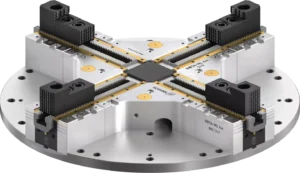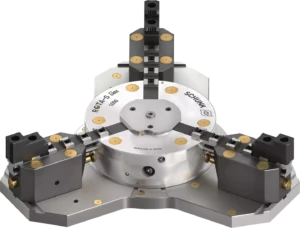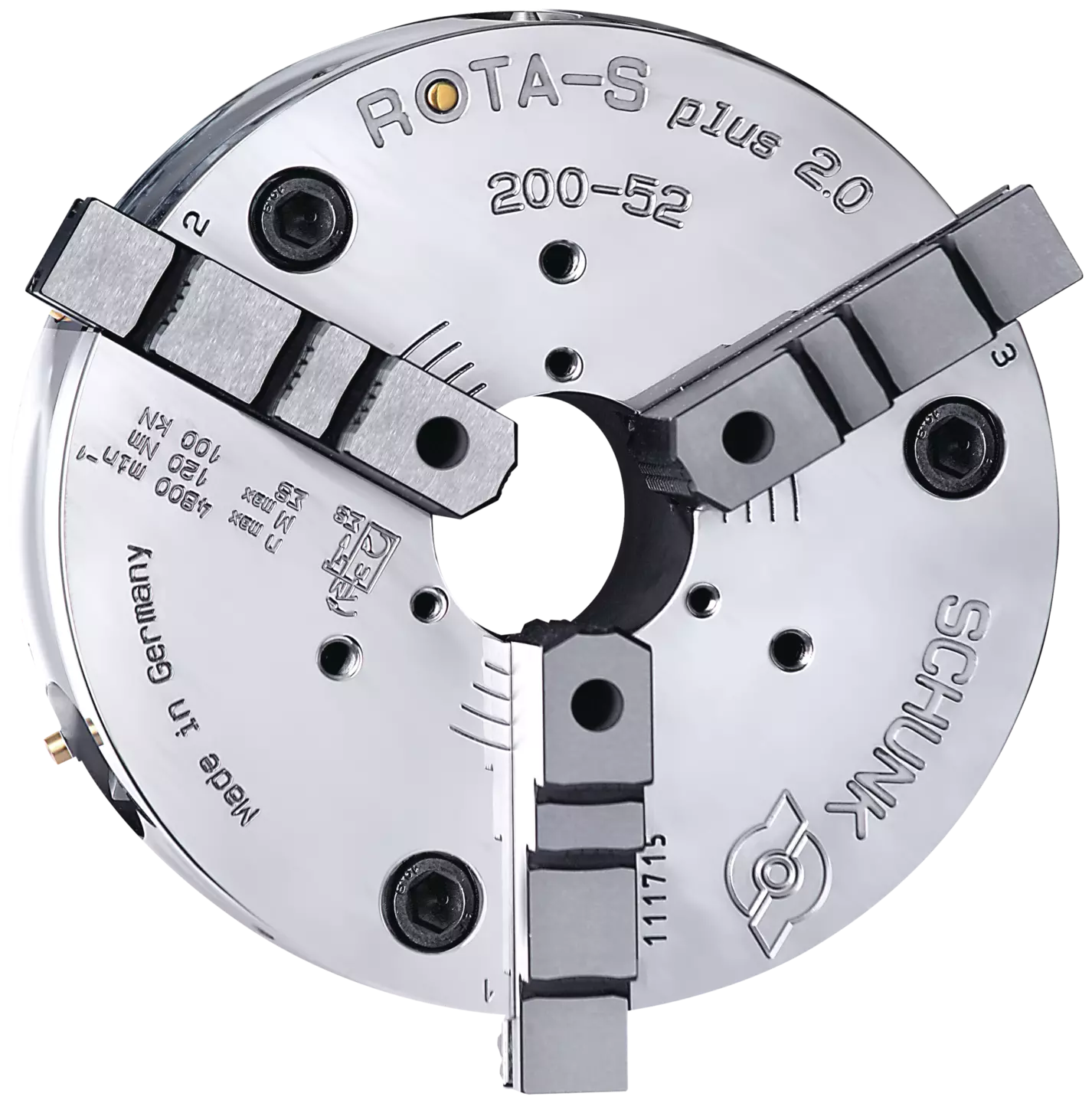In precision machining, choosing the right lathe chuck is crucial for ensuring accuracy, efficiency, and overall machining performance. A lathe chuck is a specialized clamping device that holds a workpiece in place during machining operations. It plays a vital role in turning, drilling, milling, and threading applications.
Among the various options available, power lathe chucks have gained popularity due to their ability to enhance productivity and provide a consistent grip. Whether you’re a small workshop owner or an industrial manufacturer, selecting the correct lathe chuck directly impacts your machining quality and operational efficiency.
This comprehensive guide explores different types of lathe chucks, their applications, and key factors to consider when choosing the best option for your machining needs.

Understanding Lathe Chucks and Their Importance
A lathe chuck is a mechanical device designed to secure and rotate a workpiece on a lathe machine. It ensures stability while cutting, shaping, or drilling, allowing for high precision in manufacturing processes.
The right lathe chuck offers several benefits, including:
Improved workpiece stability
Increased machining accuracy
Reduced setup time
Enhanced safety for operators
However, selecting the wrong lathe chuck can lead to issues like misalignment, excessive vibrations, and defects in the final product. That’s why understanding the different types of lathe chucks and their applications is essential for achieving superior machining results.

Types of Lathe Chucks and Their Applications
Various types of lathe chucks are available, each designed for specific machining tasks. The most commonly used options include:
Three-Jaw Self-Centering Lathe Chuck
Best for: Cylindrical workpieces
Mechanism: The three jaws move simultaneously to center the workpiece
Advantages:
Quick and easy to use
Provides accurate centering for round or hexagonal workpieces
Limitations:
Not suitable for irregularly shaped materials
Limited flexibility in gripping non-uniform workpieces
Four-Jaw Independent Lathe Chuck
Best for: Square, rectangular, and irregularly shaped workpieces
Mechanism: Each jaw can be adjusted independently
Advantages:
Greater flexibility in holding different shapes
Stronger grip than three-jaw chucks
Limitations:
Requires manual adjustment, increasing setup time
More complex to operate
Power Lathe Chucks
Best for: High-speed, automated machining operations
Mechanism: Uses hydraulic or pneumatic systems to clamp the workpiece
Advantages:
Faster clamping and unclamping, improving efficiency
Consistent and uniform gripping pressure
Ideal for mass production environments
Limitations:
Higher initial investment cost
Requires a hydraulic or pneumatic power source
Collet Chucks
Best for: Small-diameter workpieces requiring high precision
Mechanism: Uses collets to apply even pressure around the workpiece
Advantages:
Provides excellent accuracy and grip
Reduces workpiece deformation
Limitations:
Limited to specific workpiece sizes
Not suitable for heavy-duty machining
Magnetic Chucks
Best for: Thin, delicate, or non-cylindrical ferrous materials
Mechanism: Uses electromagnets or permanent magnets to secure the workpiece
Advantages:
No physical clamping, reducing workpiece distortion
Quick loading and unloading of materials
Limitations:
Only works with ferrous materials
Requires a reliable power supply for electromagnets
Combination Chucks
Best for: Applications requiring flexibility in workpiece clamping
Mechanism: Combines features of both self-centering and independent chucks
Advantages:
Can handle complex workpiece shapes
Provides a balance between accuracy and speed
Limitations:
More expensive than standard chucks
Slightly complex operation
Key Factors to Consider When Choosing a Lathe Chuck
Selecting the best lathe chuck involves analyzing several factors, including workpiece shape, accuracy requirements, and machining environment. Below are some essential considerations:
Workpiece Shape and Size
Cylindrical Workpieces: Three-jaw chucks or collet chucks
Irregular Shapes: Four-jaw independent chucks
Thin Sheets: Magnetic chucks
Machining Accuracy Requirements
High-precision tasks require power lathe chucks or collet chucks.
General machining can be handled efficiently with three-jaw chucks.
Production Volume
High-volume production: Power lathe chucks improve efficiency and consistency.
Low-volume custom work: Independent four-jaw chucks offer more flexibility.
Material Type
Ferrous Metals: Magnetic chucks work well.
Non-Ferrous Metals & Plastics: Collet chucks or three-jaw chucks are ideal.
Speed and Efficiency
Power lathe chucks allow rapid clamping and unclamping, boosting productivity.
Manual chucks require more time for setup but provide higher control.
Budget and Long-Term Investment
Power lathe chucks have a higher upfront cost but offer significant long-term savings in labor and efficiency.
Why Power Lathe Chucks Are the Future of Machining
Power lathe chucks have revolutionized modern machining by providing unparalleled efficiency, safety, and precision. Here’s why they are becoming the preferred choice in the industry:
Increased Productivity
Faster clamping and unclamping save time and improve workflow efficiency.
Consistent Clamping Force
Hydraulic or pneumatic systems provide uniform pressure, reducing material damage.
Enhanced Safety
Automated clamping minimizes human errors and improves workplace safety.
Reduced Operator Fatigue
No manual tightening is required, making operations smoother and less strenuous.
Better Surface Finish
Even pressure distribution prevents workpiece deformation, ensuring high-quality machining results.
Common Applications of Lathe Chucks
Automotive Industry – Manufacturing engine components, shafts, and transmission parts.
Aerospace Sector – Machining high-precision turbine blades, landing gear parts, and aircraft components.
Medical Equipment Manufacturing – Producing surgical instruments and orthopedic implants.
Tool & Die Making – Creating molds, punches, and custom machining tools.
Heavy Machinery & Industrial Equipment – Fabricating large mechanical components.
Conclusion
Selecting the right lathe chuck is essential for achieving precision, efficiency, and cost-effectiveness in machining. Whether you’re using traditional three-jaw chucks, versatile four-jaw chucks, or advanced power lathe chucks, your choice should align with your specific machining requirements.
For manufacturers looking to enhance productivity, power lathe chucks offer a superior solution by providing fast, automated clamping with high accuracy. Investing in high-quality lathe chucks improves operational efficiency, reduces downtime, and ensures better machining results.
When it comes to industry-leading power lathe chucks, Schunk is a trusted name known for innovation, reliability, and precision engineering. Their state-of-the-art clamping solutions help businesses achieve optimal machining performance, making them a top choice for workshops and industrial manufacturers worldwide.




Leave a Reply